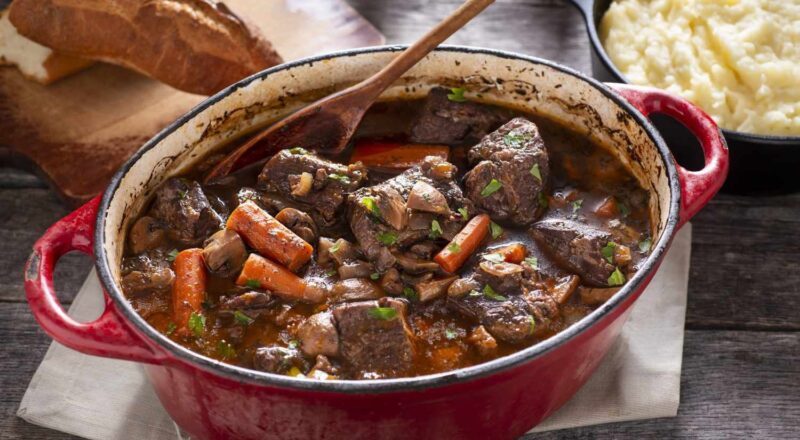Cast iron Dutch ovens are an essential piece of cookware for both novice and professional chefs. These versatile and durable kitchen tools, when properly cared for, can deliver tremendous cooking performance and longevity.
In this guide, we will delve into the processes of cleaning and seasoning your cast iron Dutch oven to ensure that it remains in peak condition, providing you with delightful culinary experiences for a long time.

Understanding Cast Iron Dutch Ovens
What is a Cast Iron Dutch Oven?
A cast iron Dutch oven is a heavy-duty, thick-walled cooking pot traditionally used for slow-cooking, braising, and baking. Its cast iron construction retains and distributes heat evenly, making it ideal for a variety of cooking methods.
Learn more about what is a Dutch Oven.
Importance of Proper Care
Proper care of your cast iron Dutch oven is crucial. It prevents rust and maintains the non-stick feature of the cookware, providing you with a better cooking experience.

Steps to Clean Your Cast Iron Dutch Oven
Step 1: Let It Cool
Before you start cleaning, allow your cast iron Dutch oven to cool down. Sudden temperature changes can cause it to crack or warp.
Step 2: Scrape Off Food Residue
Using a plastic or wooden scraper, gently remove any stuck-on food. Avoid using metal utensils, as they can scratch the surface.
Step 3: Wash with Warm Water
Rinse your cast iron Dutch oven with warm water. For stubborn residue, use a soft brush but avoid harsh detergents as they can strip away the seasoning.
Check out what you need to know about measuring a Dutch Oven.
Step 4: Dry Thoroughly
After washing, pat dry your cast iron Dutch oven with a lint-free cloth or paper towel. Make sure it is completely dry to prevent rust.

Steps to Season Your Cast Iron Dutch Oven
Step 1: Preheat the Oven
Preheat your conventional oven to 350F (175C). This ensures that the cast iron is evenly heated for the seasoning process.
Step 2: Apply Oil
Rub a thin layer of vegetable oil or melted shortening over the entire surface of the cast iron Dutch oven, including the lid.
Step 3: Bake the Dutch Oven
Place the cast iron Dutch oven, upside down, in the oven. Line the lower rack with aluminum foil to catch any drips. Bake for one hour.
Step 4: Let It Cool
After baking, turn off the oven and let your cast iron Dutch oven cool inside the oven. This allows the seasoning to set and form a non-stick layer.
Tips for Maintaining Your Cast Iron Dutch Oven
Avoid Using Soap
Avoid using soap when cleaning your cast iron Dutch oven, as it can remove the seasoning. Use warm water and a brush instead.
Store Properly
Store your cast iron Dutch oven in a dry place. Place a paper towel or cloth between the lid and the pot to absorb moisture.
Regular Seasoning
Even if you don’t use your cast iron Dutch oven frequently, it’s good to season it regularly to maintain its non-stick properties and prevent rust.
Frequently Asked Questions
Q: Can I use soap on my cast iron Dutch oven?
No, it is best to avoid using soap as it can remove the seasoning. Stick to warm water and a brush for cleaning.
Q: How often should I season my cast iron Dutch oven?
You should season it whenever you notice food sticking to the surface or if it starts to look dull. Regular seasoning helps maintain its non-stick properties.
Q: Can I use my cast iron Dutch oven on an induction stove?
Yes, cast iron is compatible with induction stoves. Its ferrous nature allows it to work well with induction heating.
For more cleaning tips, visit this external link.
Further knowledge can be found about Dutch oven lids.
As an Amazon Associate, I earn from qualifying purchases.

